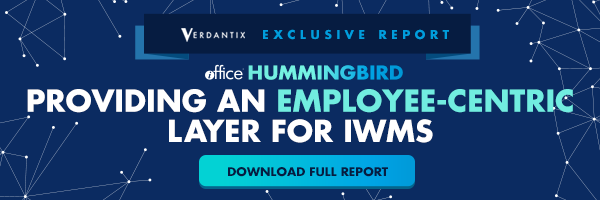Demonstrate the Value of Facility Management with Move Management


Developers are rolling out new programs such as integrated workplace management systems (IWMS) that can help facility managers improve their own performances and provide occupants with optimal environments that increase productivity, according to Facilities Net. However, facilities departments may find it difficult to justify these investments to C-suite executives because facility management teams are traditionally seen as sources of savings rather than spending.
help facility managers improve their own performances and provide occupants with optimal environments that increase productivity, according to Facilities Net. However, facilities departments may find it difficult to justify these investments to C-suite executives because facility management teams are traditionally seen as sources of savings rather than spending.
The ability to access accurate metrics is becoming a differentiator between facilities managers that are positioned to succeed in the future and those that are stuck in the past. Yet, as Facilities Net pointed out: If the burden is on facility managers to demonstrate the value of these expenditures, they will need to find ways to quantify the advantages.
Before embarking on this endeavor, facility managers must understand that they can’t necessarily expect instant gratification. Facilities Net explains that while some tools such as Facility Management software generate immediate cost savings, new applications provide long term facility management benefits in productivity and efficiency that will take time to measure and demonstrate. Space planning, lease management, energy consumption, project administration, document processing and move management are responsibilities that see long-lasting improvements.
Move management metrics provide opportunities for facility managers
Offices are constantly in flux, whether that means hiring new employees, moving staff members to new spaces to reflect promotions or establishing collaborative workspaces in an effort to modernize. Facilities managers must stay abreast of these changes or risk major roadblocks that interrupt workflow and hinder productivity.
If move management isn’t handled appropriately, new hires may not have desk space on their first days. Facility management will then need to find an alternative place until another location can be secured. Or, a person who has been promoted might pack up their belongings and arrive at his or her new office before the previous tenant has evacuated, causing confusion, delays and perhaps even compromising morale.
However, a facility department that has deployed move management software as part of their IWMS can ensure those transitions are conducted smoothly, ensuring productivity isn’t lost in the process, the media outlet reports. Facility managers can use these programs to view and process move requests, validate and authorize them electronically and use digital floor plans to test a number of potential scenarios before finalizing changes. Once the moves are completed, the systems generate records in real time so users will always see the most up-to-date versions of layouts.
Automating the move process might also help facility managers quantify costs and savings achieved through the investment, which can be demonstrated the decision-makers and used to optimize future changes. FMLink explains that employee churn must be included in benchmarking efforts as a measure of efficiency, but facility managers may find it’s easier to do so when they use web-based applications instead of spreadsheets.
Disparate documents that are created and changed by various team members can make it difficult to truly grasp the advantages achieved or the opportunities missed because facility managers must track data from multiple sources, including the costs associated with relocating office personnels’ belongings, the time for IT support to transport equipment and for telecommunications departments to reconnect their devices, the source reports. When these figures are combined and analyzed, facility managers can learn which steps lack efficiency and processes that save money.
How to show off that value
While facility managers might assume that C-suite leaders are numbers-centric, they might actually need visual representations to understand the story behind the figures, Facilities Net reports in a separate article.
“Accountants love the spreadsheets,” director of facilities operations and office services at McKesson Corp.Clayton Crawford told the source. “But it’s hard for others to see it that way. We would like to get the data into a more graphical format.”
Using software that contains those numbers, facility managers may be able to demonstrate the value in multiple formats that will appeal to various audiences, including decision-makers, colleagues and customers. Schedule a demo or get started for free to experience the power of iOFFICE.
Editor’s Note: This blog post was originally published in October 2013 and has been updated for accuracy and relevance.
